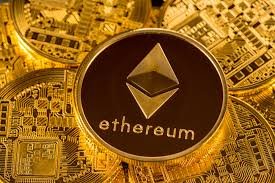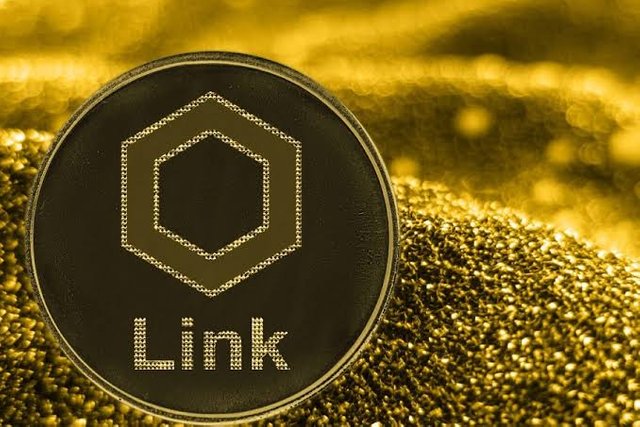Hi professor @gbenga,
I am glad that I subscribed to this academy because I am a beginner also a learner to this cryptocurrency trading.
So far with your lectures my knowledge to it is picking up like a computer trying to boost up.
Not wasting much of your time,i had like to go straight to the assignment you gave for week four which state;
Explain in a full a project built on the Ethereum Blockchain

Image source
INTRODUCTION
According to your impressive class on the topic Ethereum,
Ethereum can be regarded as the progenitor of Decentralized Applications (dApps) and it is a decentralized computing platform just like the internet but instead of utilizing a single server, it uses multiple nodes simultaneously. Just like the internet allows for the creation of Applications but in a centralized manner, Ethereum allows for the creation and running of Decentralized Applications as well as the creation and use of Smart Contracts on the Blockchain.
However,for the task I will like to bring your attention to chainlink (link)

Image source
CHAINLINK
Chainlink is an oracle platform, which means it connects smart contracts with real-time data from the outside world such as weather information or stock prices. A smart contract uses that data to execute pre-defined instructions. For example, payout an insurance claim in the event of a hurricane.While Chainlink has been around since 2017, the project didn’t really come to the forefront of the space until 2019 – after it partnered with Google. Chainlink is fuelled by an ERC-20 crypto token, LINK, and runs on top of the Ethereum Network
Chainlink was first described in a white paper published in September, 2017. Chainlink is a decentralized network that connects smart contracts to external data. It aims to bring real world data onto the blockchain so that smart contracts can interact with real world events and information that exist off-blockchain. Chainlink was built to increase the potential applications and possibilities for smart contracts and reduce their need to rely on trusted third parties
TOKEN
LINK is the digital asset token used to pay for services on the Chainlink network. It is built on Ethereum in accordance with the ERC20 standard for tokens. LINK can be bought and sold for fiat currency or other digital currencies. LINK can be purchased on a cryptocurrency exchange and stored in a crypto wallet and custodian like GeminisWHAT PROBLEM DOES CHAINLINk SALVE?
Chainlink attempts to rectify one of the biggest problems facing the blockchain sector, how to communicate information to and from the blockchain. Traditionally, this task is accomplished by sensors known as oracles. Oracles can be set up to monitor nearly anything. There are oracles that monitor the weather, sports scores, account balances, and the value of stocks, to name just a few.
Oracles expand the usability of blockchains because they provide a reliable way to initiate smart contracts when outside parameters are met. However, oracles are centralized. This centralization makes them the weakest spot in the blockchain. If an oracle becomes corrupted or is compromised, it puts the entire network at risk.
LASTING EFFECTS
Data entry is one of the most important steps in blockchain creation. Remember, blockchains are immutable and censorship-resistant. If the information they receive is incorrect, it’s very difficult to erase and rectify this data. On some blockchains, it’s impossible. This issue is known in the development community as the “Oracle Problem.” Chainlink attempts to tackle these issues through the integration of various next-gen protocols.
HOW DOES CHAINLINk (LINK) WORK?
Chainlink seeks to create the world’s first blockchain oracle network. An oracle blockchain network would be able to leverage the same technologies found in traditional blockchains to ensure that the nodes in operations are functioning properly and their data is accurate.
In the Chainlink ecosystem, this process starts when a user puts out a request Requesting Contract for information. This notification will list as a blockchain event within the network. This listing will then create a Chainlink Service Level Agreement (SLA) Contract. This contract also launches three other contracts in the system.CHAINLINK REPUTATION CONTACT
The first contract verifies an oracle’s authenticity. This coding will review the history of every oracle. The system looks at the past contributions of this oracle and how accurate they were. At the end of the assessment, the oracle receives a rank. This rank helps the system to easily utilize the best oracles.
CHAINLINK ORDER-MATCHING CONTACT
The second contract delivers the Requesting Contract to the Chainlink nodes. When the nodes receive this request, they will start to bid on it. The system automatically configures the number of nodes and the node type needed to complete the request using preprogrammed prerequisitesCHAINLINK AGGREGATING CONTACT
The last contract reconciles incorrect data. The system will review all the data that has completed the previous checks and balances. Any data that doesn’t fall in line with the other network inputs are disregarded. Once this step is complete, the data is validated and available to the blockchain.
BENEFITS OF CHAINLINK (LINK)
Chainlink brings some major benefits to the network. Oracles are important to network expansion. They are at the core of some of the most exciting developments in the sector. For example, DEXs (decentralized exchanges) utilize oracles to determine the price of cryptocurrencies without offering an order book.
Chainlink allows firms to continue to leverage this powerful technology in a trustless manner. Users can rest assured that the data they receive is not corrupt, incorrect, and timely. In the event of a single node failure, the system automatically replaces it with a higher ranking alternative.HISTORY OF CHAINLINK (LINK)
Chainlink has been a project to watch for years. The program first entered the market in 2014 under the name SmartContract.com. Shortly after its launch, the name was changed to Chainlink to better represent the platform’s core market. Today, Chainlink helps to bridge the growing gap between external data sources and public blockchains in new and exciting ways.
In 2017, Chainlink hosted an ICO that was, at the time, one of the largest events to take place. The network has been in the spotlight ever since. In total, the crowdfunding event netting the platform a respectable sum of $32 million. This funding has helped Chainlink to push the boundaries of oracle reliability and security to new heights.
LINK ON CoinMarketCap
In 2019, Chainlink made one of its most significant partnerships to date. The firm successfully lined up a strategic partnership with Google. The agreement secured Chainlink’s protocol within the Google smart contract strategy. This move was seen as a major win by investors as it allows users to connect to Google’s two most popular cloud services – BigQuery via API.HOW TO BUY CHAINLINK (LINK)
Chainlink is available at most major exchanges. One of the best ways to get LINK is to use Binance. Binance is the largest exchange in the world in terms of market cap. You can find a huge variety of coins on the exchange and the fees are very competitive. You will need to register for a Binance account. This process requires you to prove our identity. You will also need to link a debit or bank account so you can load your exchange wallets. Once this process is set up, getting LINK only takes a few minutes.The first step is to fund your account. Next, you need to trade your fiat currency over to ETH or BTC. Once, you have completed this step, the rest is very simple. Now select the LINK trading pair that matches your crypto and the amount you desire to trade. Your LINK will be in your exchange wallet in minutes
HOW TO STORE CHAINLINK (LINK)
If you plan to trade your LINK frequently or if you only plan to hold a small amount of LINK, you can leave it on the exchange wallet. However, it must be mentioned that this is the least secure way to store your LINK. You can also use a reliable mobile Dapp like JAXX to keep your LINK safe and away from the hungry eyes of exchange hackers. If you seek to make a major investment in LINK or if you are planning on HODLing this crypto for long periods of time, a hardware wallet is the best option. Hardware wallets keep your crypto stored offline in “cold storage.” This strategy makes it impossible for online threats to access your holdings. The Ledger Nano S or the more advanced Ledger Nano X both support Chainlink (LINK).CHAINLINk – A Project Worthy of the Hype
No one can argue that the crypto space has a lot of projects that are all hype and no substance. Chainlink is not one of them. This platform provides a necessary resource to the market
FINALLY: chainlink doesn't seek to compete against other cryptocurrencies.
Thank you for the wonderful lectures sir although this is my first time attempting your task and lectures but i won't miss any again because your classes are educational I am @gracellagiftBest regards
Much love